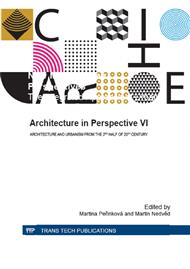p.39
p.44
p.51
p.55
p.61
p.65
p.72
p.79
p.88
Slovak Retail Facilities in the Postwar Period
Abstract:
Retail units built in Slovakia after the war have continued in the tradition of the functionalist pre-war production, where the emphasis was on the rational operation. Their solutions: disposition-spatial, material-construction and operational were determined by socio-economic and political conditions of a totalitarian regime. Directional management of construction has been focused on building-up sale units in central urban areas, in areas of newly-formed residential dwellings and conditions of rural settlements. Insufficient design capacities led to the creation of typified designs. Sterile cubic solutions conditioned by building-material base of society were reflected in the austere architectural embodiment. The transformation process of the nineties significantly affected overall the retail structure. The possibility of entrepreneurship and free pricing encouraged vendors to build large numbers of different small-scale devices. Globalization tendencies with an internationalization of trade and the free movement of capital caused by the turn of the century building of major shopping centers with super and hypermarkets. The building was focused initially to the remote large settlements and later to wider centers of towns. Architecture of modern suburban retail buildings is marked by utility of function, low-floor construction, high volume mass. By typological and material-constructional solution and by austere architectural expressions shall have the adjective "ephemeral".
Info:
Periodical:
Pages:
61-64
Citation:
Online since:
November 2014
Authors:
Permissions:
Share:
Citation:


